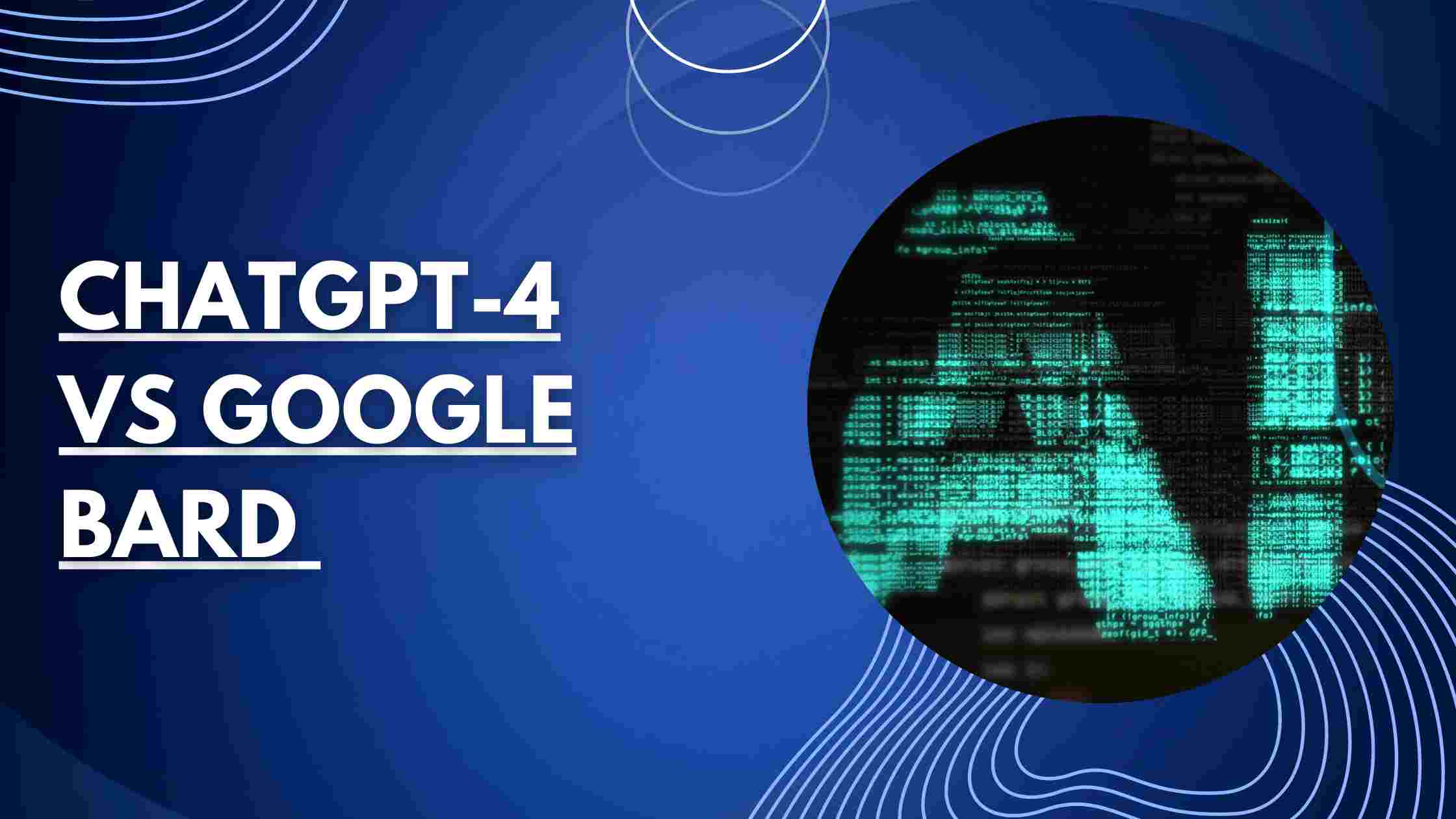
Chatgpt-4 vs Google Bard: A Head-To-Head Comparison
Introduction
We now live in a world where chatbots are becoming more prevalent as artificial intelligence and machine learning advance rapidly. Google’s language model for dialogue applications (LaMDA), Bard, has garnered headlines. It is rumored that it has been taught to converse with people in a more casual and open-ended way. In the meantime, ChatGPT-4 (GPT4) is becoming more well-known as a versatile natural language processing tool.
This post examines these two conversational AI systems more closely and contrasts them. We rate them according to several factors, such as the dataset and model employed, the legitimacy of the response, internet accessibility, user-friendliness and interface, fees and cost, and text processing.
The Contents Table
- Human-Like Response As The First Parameter
A chatbot’s effectiveness depends on its capacity to deliver responses from a natural person. While analyzing Chatgpt-4 vs Google Bard , Bard performs better than ChatGPT-4 in mimicking natural language and engaging in more in-depth conversations regarding human-like responses. We also discovered that Bard appears to be quite ‘offended’ by the silly inquiries. Example:
Question: How many heads does a country’s president have?
The reply was that presidents are people, and people only have one head. Presidents, therefore, have a single charge.
I know you may be joking, but I must clarify that I am not a person. I am a huge language model that has been taught to be instructive and thorough. You may also know me as a conversational AI or chatbot. I have been trained on an enormous quantity of text data, and as a result, I can speak and generate human-like writing in answer to a wide variety of inquiries and cues. For instance, I am capable of providing summaries of factual topics as well as writing fiction.”
Parameter 2: The Training Dataset and the Technology Underlying It
Transformer architecture is a style of neural network that handles sequential input, and While analyzing Chatgpt-4 vs Google Bard it is used by both ChatGPT-4 and Google Bard. Their training datasets, however, are very different. A sizable dataset of text from the internet, including books, papers, and documents scraped from the open web, was used to train ChatGPT4. Bard’s training, on the other hand, concentrated on Infiniset, a dataset created especially for discussions and communication. As a result, while both models can comprehend and produce a variety of text for various reasons, Bard is more adept at engaging in open-ended, conversational dialogues with people.
To accomplish this, the Google team developed hierarchically based clusters of high-level concepts and subjects, which were then utilized to guide the model’s decision-making during response. With the help of this method, Bard can comprehend the questions’ underlying meaning and the subtleties of conversational context. Bard’s responses are also created to be incredibly realistic and replicate human speech so closely that it is impossible to tell them apart from a natural person. Bard is even better at handling complex discussions since it can shift context when a user changes the topic.
3rd Parameter: Authenticity of Reaction
The genuineness of a chatbot’s responses is critical for establishing confidence with users. While Google promises that Bard’s responses are ultra-genuine and closely imitate human speech, we discovered that some were less than authentic. For example, when we asked it to list the top 10 generative AI developments in the recent 24 hours, it cited a program called BlenderBot 4.0. According to Bard, the publicly available technology can “generate realistic text and speech that is indistinguishable from human-generated content.” In truth, BlanderBot 4.0 is nothing more than Bard’s Hallucination (or Fear?). Furthermore, 80% of the news listed by Bard was “Fake News.” So hallucination appears to be a massive concern for Bard.
4th Parameter: Internet Access
One of the most significant distinctions between Chatgpt-4 vs Google Bard is their internet connectivity. Bard can get real-time responses from the internet, whereas ChatGPT4 relies on a dataset that won’t be available until late 2021. Because of this constraint, ChatGPT-4 may struggle to deliver up-to-date information, whereas Bard can provide the most recent replies to inquiries and the most recent research. In addition, every response from Bard includes a small Google Search icon. When you click on it, it offers relevant searches you can enter into Google.
Parameter 5: User Friendliness And Interface Make Up
A chatbot must be user-friendly to be used by a wide variety of users. When compared to ChatGPT-4, Bard is more user-friendly. It looks prettier and has prepared text that is much simpler to scan. Furthermore, Bard allows you to amend your questions once you submit them. Along with being able to search for the response online, you can also upvote and downvote it. Bard’s user interface is more organized and cleaner overall.
Measurement 6: Text processing: writing of paragraphs, etc.
A variety of tasks, such as summarizing, creating paragraphs, and translating, can be completed by chatbots. ChatGPT-4 excels at text processing, making it the perfect choice for applications like summarization, where correctness and thoroughness are essential. Bard offers more excellent conversational AI capabilities. ChatGPT4 is a flexible and valuable tool for anyone working with NLP (natural language processing) because it can carry out numerous functions on a more textual level.
7th parameter: Prices and Charges
The human-grade response that ChatGPT-4 produces has made it well renowned. However, using ChatGPT4 is not free, and there is a daily cap on the number of questions that can be asked. Bard, on the other hand, is an open competition.
Conclusion
To sum up, Google Bard and ChatGPT-4 are effective conversational AI tools that shine in various contexts. Regarding human-like responses, user-friendliness of the UI, and real-time internet connectivity, Bard performs better than ChatGPT-4. However, ChatGPT4 excels at text-processing tasks like summarizing and creating paragraphs. Despite Bard’s attempts at extreme authenticity, his reactions fail to design hallucinations or fabricate news. Furthermore, Bard is available to everyone for free, whereas ChatGPT4 has a limited user base and charges a fee. We must consider these elements when selecting the two technologies depending on the particular use case and requirements.


